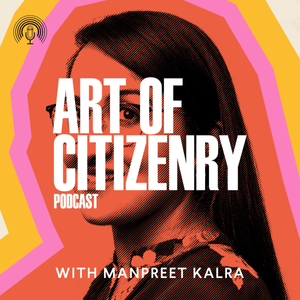
Deconstructing India’s Agricultural Industry
At this moment, the largest protest in human history is happening. 250 million farmers and workers across India, many from the states of Punjab and Haryana, have taken to the streets in protest of three new agricultural bills that threaten to obliterate their livelihood. On the surface, India’s Prime Minister, Narendra Modi, has claimed that these bills promote a “free market,” but like everything we cover in this podcast, we know that not everything is always the way it seems.
Punjab: A Land Divided
We can’t begin this episode without understanding the history of a land divided. What is now considered the state of “Punjab” is just but a fraction of what used to be the land of lush green fields and flowing five rivers. In 1947, as the British left India, they divided Punjab between what is present day Pakistan and India. What followed was the world’s largest mass migration, resulting in the bloody displacement of hundreds of thousands of people. Families were uprooted from their homes, forced to leave the land they had lived on for generations. During the journey, many lost loved ones due to violence caused by the displacement.
Post 1947, Punjab was even further reduced in size from 58,000 square miles to 19,000 square miles. However, despite its relatively small size, it produces a disproportionately high ratio of India’s crops.
Why India’s Push for a Free Market is Exploitative
In most “developed” countries with a free market system, farmers have protections, farm subsidies, that essentially help reduce any financial risk related to weather, commodities brokers, and disruption in demands. But as with any capitalist system, these systems usually only benefit larger producers, but still, they exist, discouraging the complete monopolization of the agricultural industry by corporations.
“The world farmers protest currently underway in India opens up a pandora’s box of questions that humanity is going to face in next few years. What is the future of sustainable growth, food diversity, ethnic cultures, urban migration in a profit-driven economy? Should our heroes be the next billionaires or farmers fighting on ground to retain food diversity - something that makes this world worth living? These are the questions we all need to ask.” - Arvinder Singh
Capitalism at its core is built on the existence of inequities. The goal of any business operating in a capitalist society is to maximize profits for shareholders, prioritizing profits over people. This notion leaves those at the bottom, the workers and small farmers, with only a small share of the wealth, if that. Addressing these layers of complexities when understanding any issue is critical.
In India, the main security blanket that exists for small farmers in particular is the Minimum Support Price (MSP), which has not been included in writing under the new ordinances. Without significant subsidies and a MSP, India’s small farmers are likely to be priced out and unable to compete. As is the case with free markets, when corporations get involved, the marketplace becomes competitive, allowing corporations to undercut prices to the point at which small farmers are unable to compete, left with no farm, and no land.
This in turn, only feeds into an already volatile situation with India’s farmers experiencing an exorbitantly high suicide rate.
“My family went into a lot of debt to try to purchase the supplies and the agrochemicals that they needed to keep up with the changes of the Green Revolution. And that debt got passed down. So it started with my grandfather, went to my dad, from my dad it went down to my Chacha. And so my Chacha, who's still in Punjab and still farming he's still dealing with that debt... For a lot of folks, it seems so insurmountable, and they don't see an opportunity to get out of it just through farming, and suicide becomes the only option or the only option that they see.” - Amrit Singh
It also then allows for corporations to hoard large amounts of crops, increasing demand, and therefore, the market value of the crop. They can, in turn, sell the crops at a much higher price than what the farmer was paid to begin with. This allows for unfair pricing -- hurting both farmers and consumers while lining the pockets of those who already hold most of the country’s wealth.
Global Economic Development
“The economics of a particular country has to be grown there. If you try to import it directly from another country, those models sometimes fall flat.” - Arvinder Singh
The issue with a cookie cutter approach, we fail to acknowledge the complexity of layers that exist in any given society. We see this with social entrepreneurship as well. To assume the same approach to economic development can work in any country is naive. We must recognize that...
01/08/21 • 76 min
Generate a badge
Get a badge for your website that links back to this episode
<a href="https://goodpods.com/podcasts/art-of-citizenry-178544/peeling-back-the-layers-of-punjabs-green-revolution-15174866"> <img src="https://storage.googleapis.com/goodpods-images-bucket/badges/generic-badge-1.svg" alt="listen to peeling back the layers of punjab's green revolution on goodpods" style="width: 225px" /> </a>
Copy